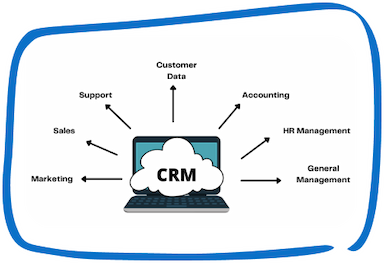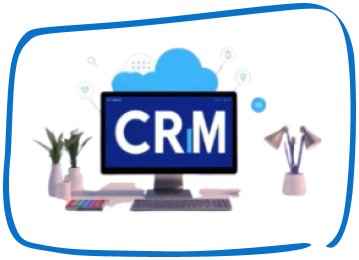Payroll plays a fundamental role in business operations, extending beyond mere wage calculations and payments. It is a function that has a significant impact on employee morale, productivity, and the overall financial performance of the organization. Also, using HR Software or payroll software helps in complete payroll processing.
Regrettably, a quarter of employees have experienced errors in their paychecks. According to Clutch, small businesses are particularly vulnerable to accounting mistakes and data breaches, with 25% of them still relying on manual pen-and-paper financial recording methods. Additionally, nearly half of these businesses lack dedicated accountants or bookkeepers.
In the Middle East, various countries are governed by distinct social security, employee protection, and tax regulations. Employers must pay careful attention to compliance with payroll requirements. As an HR manager, it is crucial to stay informed about policies related to working hours, salaries, holiday entitlements, and severance pay. Taking proactive steps to optimize your payroll processes is also essential.
In this article, we will delve into the steps involved in payroll management, address common concerns, and offer solutions for streamlining the process. Continue reading to discover how to effectively manage your payroll processing.
What Does Payroll Processing Entail?
Before delving deeper into the topic, it’s important to establish a clear understanding of payroll processing.
In simple terms, payroll processing refers to the procedure of compensating employees. However, this process encompasses a series of vital stages, including the monitoring, calculation, and distribution of employee payments. Additionally, it involves the deduction of funds for taxes, insurance, benefits, and other necessary disbursements.
Typically, a specialized team of payroll professionals manages the intricacies of payroll processing. In many instances, the human resources (HR) department assumes responsibility for this pivotal administrative function. Also, they wase their processes with HR and payroll software.
Payroll Processing Tasks: A Comprehensive Overview
Establishing Policy
The initial phase of the payroll process involves crafting a comprehensive payroll policy. This policy serves as a guiding document for both employees and the HR team, outlining their respective payroll responsibilities. It encompasses various aspects, including employee attendance, tax reporting, leave records, overtime, vacation accruals, and more. Additionally, the policy addresses matters such as work-time tracking, payroll deductions, wage structures, record-keeping procedures, and other relevant considerations.
Managing Data
Efficient payroll operations hinge on the meticulous organization of employee data. This data encompasses a wide range of information, including onboarding details, tax forms, insurance documentation, deduction records, salary particulars, personal information, and much more. Furthermore, it is essential that this data is maintained in a clean and accessible manner, readily available whenever and wherever needed. Regularly verifying the accuracy of this data is a recommended practice to enhance the efficiency of payroll processing.
Payment and Taxation
Organizations must determine payment schedules for their employees, which can vary based on factors such as location and employment agreements. For instance, monthly payment schedules are commonly followed for employees in India. Additionally, organizations need to decide on the methods of payment, which may include options such as direct deposit, wire transfer, mobile wallet, and other emerging payment solutions. Non-traditional and innovative payment models, including cryptocurrencies and digital currencies, are gaining acceptance in various parts of the world. Ensuring timely and accurate tax filings is of paramount importance, as failure to do so can result in penalties imposed by government authorities.
Calculation and Payslip Issuance
Efficient payroll calculation is crucial for ensuring accurate and punctual employee compensation. Key calculations involve determining gross income and net income. Following the payroll calculation, it is essential to generate and distribute payslips, which should contain comprehensive details about both gross and net income, along with any significant deductions.
Reporting
Monthly bookkeeping and accounting are integral components of the payroll process. The creation of payroll processing reports serves several purposes, including the assessment of the following:
- Efficiency of the payroll processes.
- Identification of payroll errors and quantification of their financial impact.
- Identification of areas for improvement and the formulation of corresponding changes to enhance efficiency.
Salary Disbursement
At the designated payday, it becomes necessary to distribute employee salaries. The salary disbursement process can be executed through various methods, including:
- Handing out cash in envelopes (with the caveat of ensuring manual recording of payment receipts).
- Mailing paper checks to employees’ home addresses or distributing them at the office.
- Initiating direct deposits into employees’ bank accounts.
- Transferring funds to mobile wallets for employee access.
Payroll Concerns: 4 Key Areas to Address
Now that you have a grasp of payroll processing and its associated steps, as an HR manager, it’s essential to recognize the payroll processing challenges within your organization. With that in mind, here are critical areas of concern related to payroll:
Payroll Efficiency and Accuracy:
Payroll is a multifaceted process comprising eight pivotal steps. It’s imperative to streamline this process to expedite it while minimizing the likelihood of errors. This ensures that employees receive their rightful wages promptly. Also, it reduces the need to contend with employee complaints and payroll disputes, which can be highly burdensome.
Team Collaboration:
In a word, payroll transcends the confines of the HR office, necessitating coordination with various departments. Each supervisor must diligently oversee their team members and submit payroll information punctually. Such collaboration leads to expedited payroll processing and ensures that employees receive accurate and timely payments.
Data Protection:
Organizations must actively safeguard employee bank details and salary information against both physical and cyber threats at all costs due to their confidential nature. It’s imperative to emphasize that any data breach is absolutely unacceptable. Such breaches not only incur financial costs for the company but can also result in legal consequences.
Regulatory Compliance:
Precise wage payment is of paramount importance, as are the correct withholding and disbursement of taxes, insurance, and benefits. Maintaining compliance with relevant regulations is an ongoing imperative. Doing so not only prevents employee grievances but also safeguards against substantial penalties, legal entanglements, and even potential business closures.
Payroll Processing Trends for 2023
In the year ahead, several notable payroll processing trends are poised to shape the landscape. Here’s a look at what to expect:
Complete Payroll Solutions:
Businesses are increasingly seeking comprehensive payroll solutions that streamline HR processes. Organizations prefer user-friendly self-service software solutions that encompass recruitment, payroll, and HR functionalities over standalone options. This trend is anticipated to persist throughout 2023.
Organized Payroll Data:
Efficient payroll management hinges on the organization of data. Having all payroll-related information in one centralized location facilitates seamless organization. Additionally, regular updates and maintenance of payroll files are essential practices for achieving this objective.
Streamlined Payroll Processes:
As the HR manager, simplifying payroll workflows is paramount. Also, effective communication among all stakeholders, from employees recording attendance to supervisors monitoring working hours, is crucial to ensuring smooth payroll operations.
Payroll Software:
The adoption of cloud-based technologies is experiencing rapid growth. Given the increasing complexity of payroll processing in the context of remote and hybrid work environments, investing in payroll software and technology is expected to be a key strategy in 2023. Payroll software can be included in HR Software where everything HR people easily perform their HR tasks.
Compliance Requirements:
With ever-evolving financial laws and tax regulations, data-driven payroll solutions are indispensable to ensure real-time compliance. This is particularly significant for businesses operating internationally and adhering to diverse legal frameworks.
Payroll Outsourcing Evaluation:
In 2023, organizations are advised to annually evaluate whether to opt for payroll outsourcing. Consider several factors in this assessment, including the complexity of payroll processing, time requirements, associated costs, and the proficiency of the in-house HR team. Moreover, weighing the benefits of outsourcing against in-house payroll operations is essential in making an informed decision.
The bottom line:
While payroll processing may initially appear straightforward, its complexities grow with business expansion and workforce enlargement. Errors, delays, or inaccuracies in payroll can result in penalties and erode employee trust and the company’s reputation. Therefore, selecting a reputable payroll service provider can prove highly advantageous.
Speak with Our Team!
4.9 Stars
1k+ reviews on






